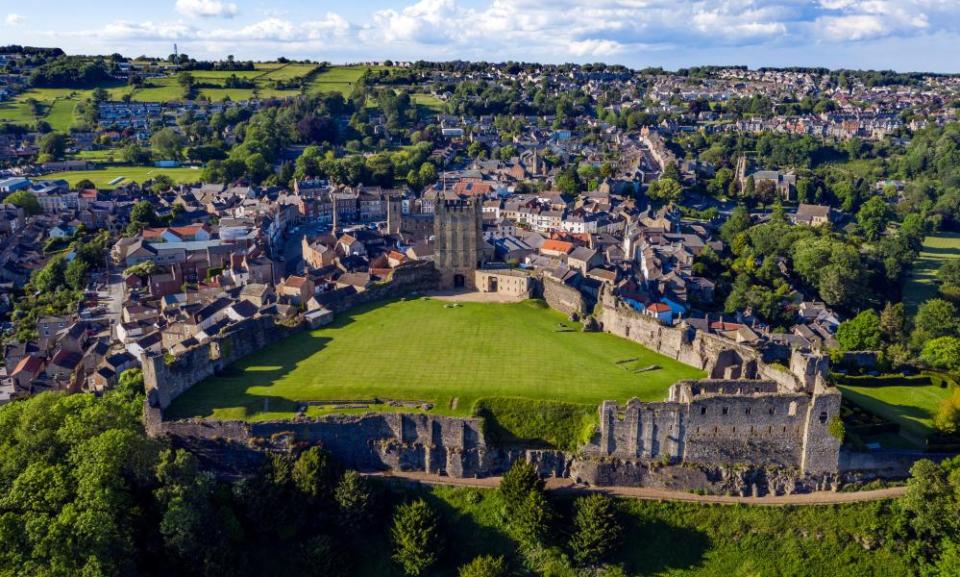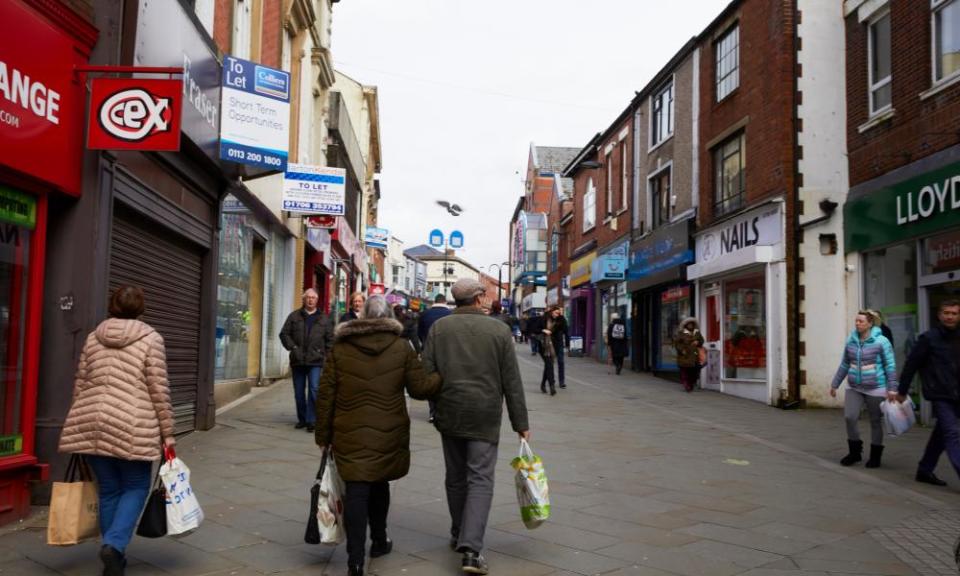£1bn to ‘level up’ towns … but Tories already cut £2.4bn

It was supposed to redraw the economic map of Britain. But funding announced by Rishi Sunak last week for 45 struggling towns across England is worth less than half the amount cut from their local budgets under the Conservatives, according to an Observer analysis.
Using the budget to restart the government’s levelling-up agenda after dealing with the Covid pandemic, the chancellor announced £1bn of funding from the flagship “towns fund” for communities including Castleford, Rochdale and Wolverhampton.
However, analysis of local authority finances by the Observer reveals the 45 towns are located in council areas that have suffered budget cuts worth in excess of £2.4bn since the Tories came to power in 2010.
The assessment, based on figures from the Centre for Progressive Policy, show some of the councils have experienced deeper cuts in total service expenditure than most in the decade before the pandemic, with towns in northern England bearing the brunt.
According to the figures, Rochdale – which is set to receive £23.6m from the towns fund – spent almost £100m less, after taking account of inflation, in 2019-20 on local services than in 2009-10. Meanwhile neighbouring Bolton – due to get £22.9m from the pot – has suffered cuts worth £74m.
It comes after Sunak was accused last week of “pork barrel politics” given that 39 of the 45 towns are represented by Conservative MPs. His Richmond constituency also emerged among areas in the highest priority tier for support from the government’s levelling-up fund, a separate programme, while less prosperous neighbouring areas had been left out.
Council spending on services has still fallen dramatically in these places. Matthew Brown, the Labour leader of Preston city council, said the £20m the city is due to receive from the towns fund was helpful, but insufficient to patch up the fallout from years of cuts directed from Westminster.
“It’s been difficult to respond to Covid when your services are cut to the bone,” he said, adding that Preston’s budget has been cut by a third since 2010, forcing it to sell public assets and cut spending on community projects.
“Obviously it is welcome because places like Preston have been disinvested in for decades, so yes £20m for our city centre is welcome. But in the context of years of austerity and the neoliberal economics we’ve had for decades, I think we need a lot more than this,” he said.

The figures analysed by the Observer assess cuts to council service budgets – the funds for day-to-day spending on areas such as adult social care, road maintenance and bin collections. This differs from the aim of the towns fund, which provides a one-off boost for infrastructure investment.
The government said more was being spent on local areas than the towns fund alone, including £51bn for councils in 2021-22, £2.3bn more than this year, while all councils could bid for the £4.8bn levelling-up fund.
A spokesman for the communities department said the analysis was flawed and it had committed more than £35bn since the start of the pandemic to support councils. “It ignores all the other funding provided to councils and the fact that councils are responsible for managing their own spending,” he added.
However, experts said the stark contrast between the towns fund and budget cuts since 2010 was important to make. Paul Swinney, director of policy at the Centre for Cities thinktank, said: “The background of 10 years of local authority cuts is what people feel on a day-to-day basis.
“We’ve seen a budget where there has been a sprinkling of gimmickry almost. It’s a contradiction, saying, ‘look we’re coming giving sweets here’, but at the same time it’s these areas where services have deteriorated, and there will be more to come. It doesn’t point to a levelling-up agenda.”
Zoe Billingham, head of policy at the Centre for Progressive Policy, said funding for physical infrastructure was welcome, but service spending was important to address more fundamental weaknesses. “To level up left-behind places we need to see investment in social infrastructure: in social care, libraries, skills and youth services. This will be essential for an inclusive economic recovery.”
“So far, we have seen little evidence to suggest the levelling-up agenda is on the right track,” she said.
Steve Reed, the shadow communities secretary, said the towns fund was a “drop in the ocean” compared with a decade of austerity.
“Funding vanity projects like rebuilding Newark’s medieval gatehouse doesn’t fix major inequalities between our regions, revive local economies or restore crucial services like social care,” he said.

 Yahoo Finance
Yahoo Finance 